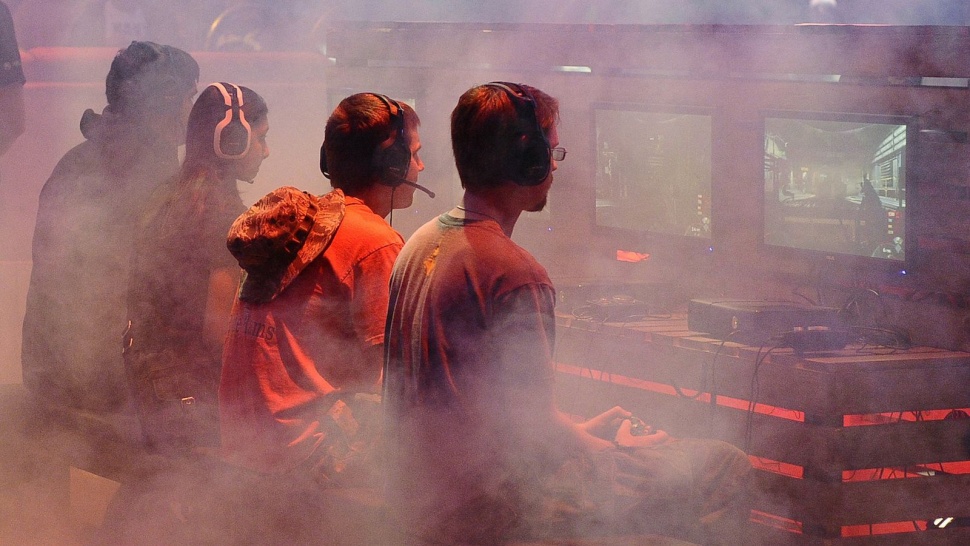Nearly 150 athletes from the US team had to set up GoFundMe pages to cover their costs this year, and when it’s not Olympics season, many professional athletes in sports such as rowing, swimming, and javelin live on or below the poverty line.
Maybe they should try running around in virtual worlds instead of real ones. If athletes played video games such as Call of Duty, League of Legends, Hearthstone: Heroes of Warcraft, or StarCraft II instead of pushing the limits of their physical bodies, they’d be making bank. While names like Sebastian Engwall and Min-Liang Tan might be even less recognizable to the public than a country’s table tennis squad in a non-Olympics year, professional gaming (or “eSports”) offers far more opportunities to make a steady buck than the Olympics and many other major sporting tournaments.
For example, The International 2016 is a five-day Defence of the Ancients 2 (often abbreviated to Dota) championship tournament currently underway in Seattle’s 17,000-seat KeyArena. With a roster of 90 players and coaches from 22 countries, it’s dwarfed by the Olympics in every respect save one: the prize money. Based on their performance and ranking, the 16 teams competing will share in a gargantuan prize pool of over $20 million, which is largely derived from the proceeds of in-game sales from Dota’s millions of casual online players. The eventual champions will pocket almost $9 million split between the team of five (or six, if they have a coach) players, and even the lowest-placing teams will still take home $101,395 in consolation prize money.
The International Olympic Committee (IOC) doesn’t actually pay anyone who competes in the Games, leaving the winners’ countries to set their own monetary benchmarks. It’s true that there are several countries that lavish extravagant cash prizes on their rare medal winners, including Singapore, Azerbaijan, and Indonesia, and the United States. But even the US—by far the most prolific medal collector of any nation—only offers $25,000 for winning gold, $15,000 for silver, and $10,000 for bronze.
This means that Simone Manuel, who just took home the gold in the women’s 100-meter freestyle, will be awarded $25,000 by the US Olympic Committee. But at Blizzard Entertainment’s annual BlizzCon event last November, Swedish eSports player Sebastian “Ostkaka” Engwall took home $100,000 for winning the Hearthstone: Heroes of Warcraft World Championship. So did Korean gamer Kim “sOs” Yoo Jin after winning the Starcraft II World Championship Series. And the same goes for Olympics teams: The US women’s 4×200-meter freestyle relay team, which also won gold this week, will take home $100,000 between them, whereas the team of five who clinched first prize at the Epicenter Dota 2 tournament in Moscow back in May won $250,000.
IRL athletes, the biggest and most entertaining gaming teams also attract lucrative sponsorship deals with the likes of Coca-Cola, Intel, Nissan, and Doritos. Teams also have their own clothing and accessory lines and can make celebrities out of their most successful and charismatic signees—or trade them away at will. In January, FaZe Clan signed a five-person lineup of Counter-Strike players from rival team G2 Esports for $700,000, potentially the largest such deal in the game’s history.
But unlike Olympic athletes, who often have to foot their own bill as they bounce from qualifier to qualifier, most professional eSports players have their travel, accommodation, entry fees, and hardware costs covered by their teams or sponsors. While it’s still quite rare, some of the biggest organizations also pay their players a salary. Members of North American-based team Ember, for example, earn between $57,500 and $65,000 in base salary, with up to $27,000 in performance and signing bonuses on top. Riot Games, which owns League of Legends, pays players in its Championship Series a base salary that amounts to roughly $12,500 for three month’s worth of work.
Source: QZ.net
Twitter: Dzejsonac




Share the News